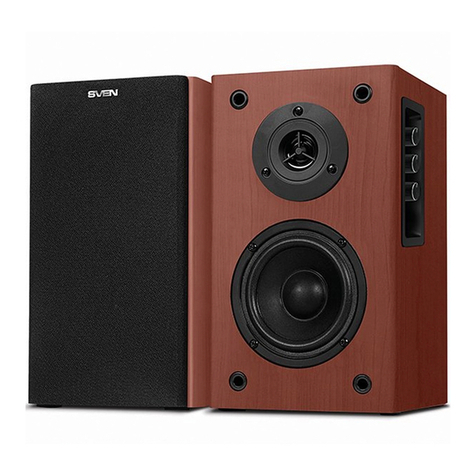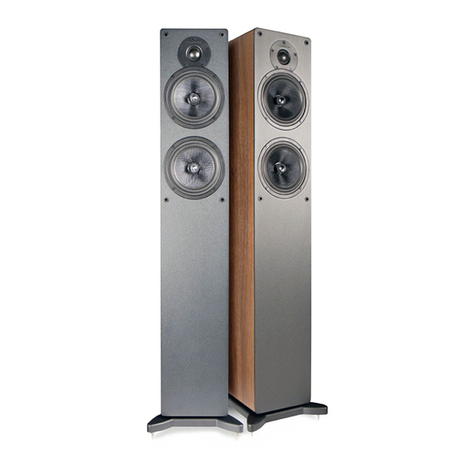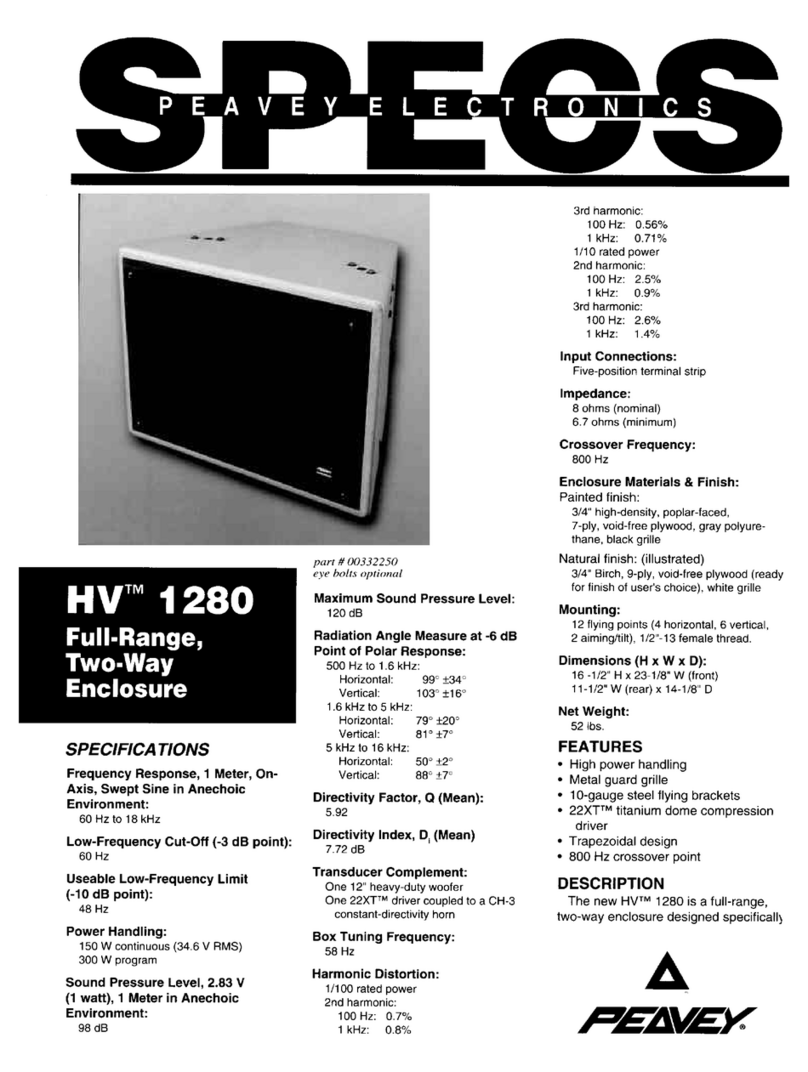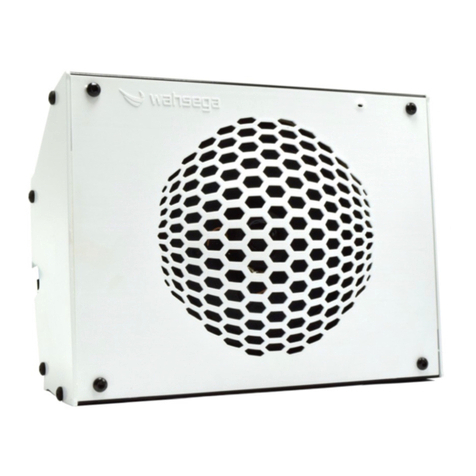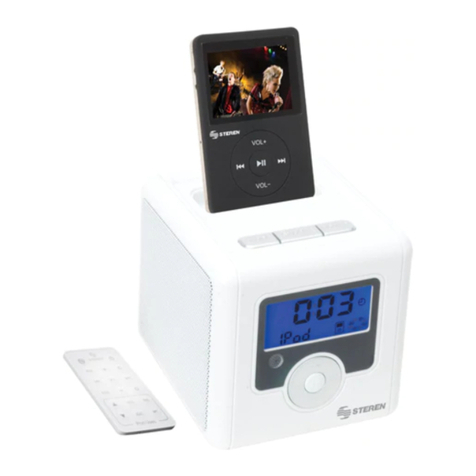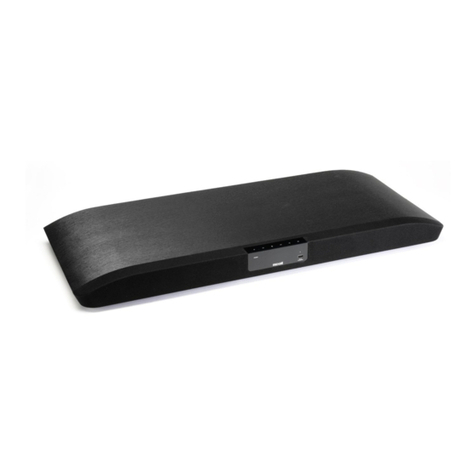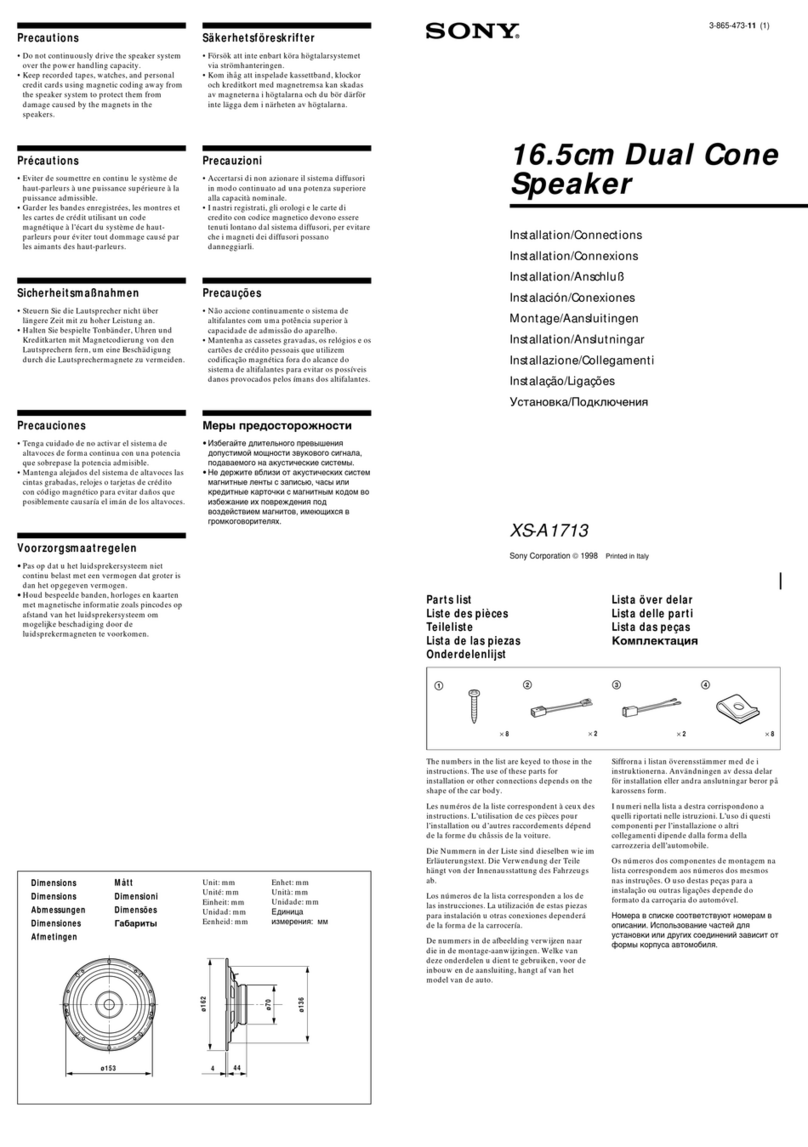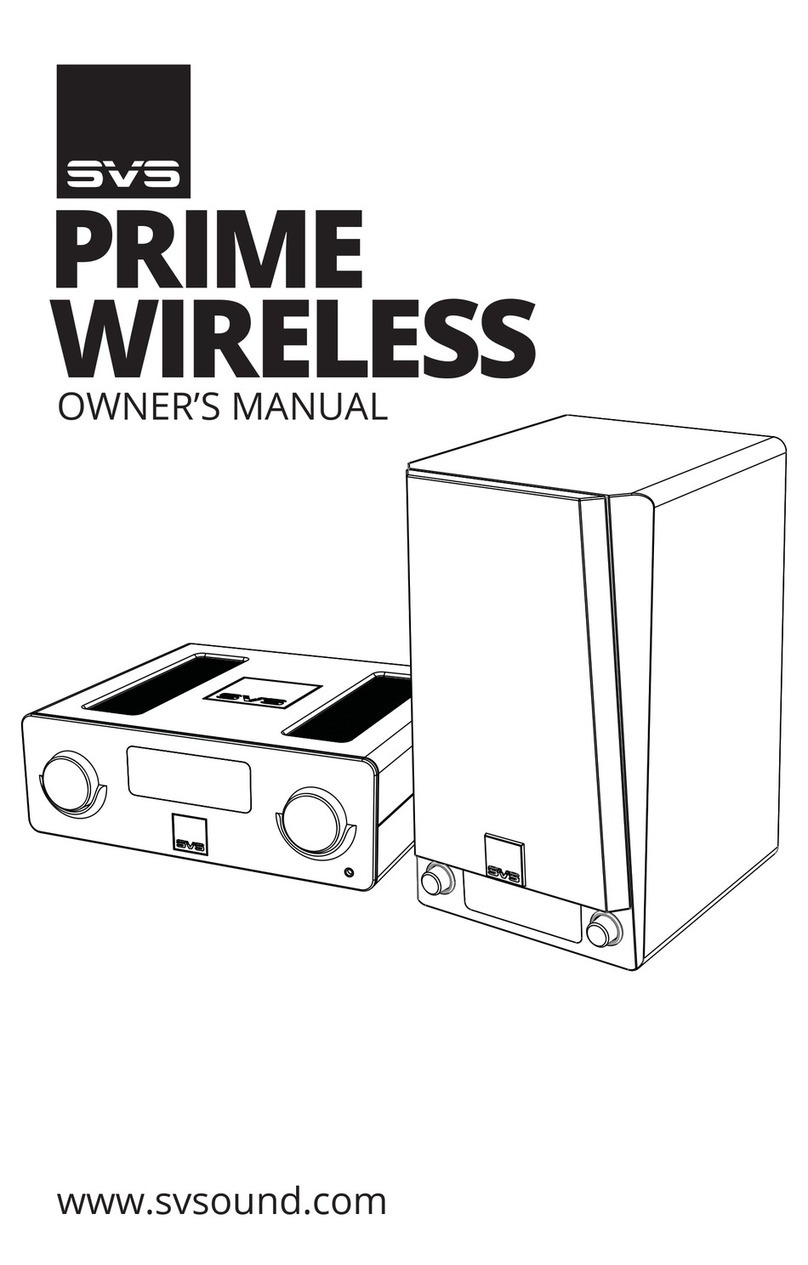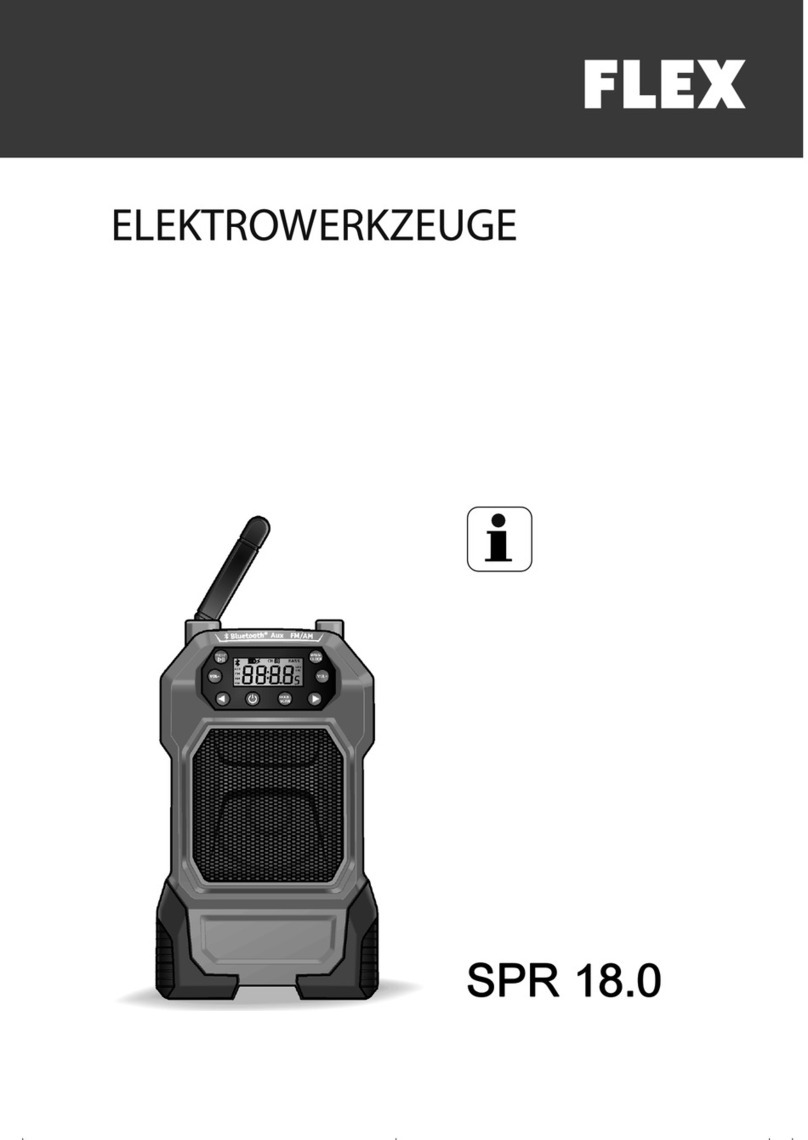GEC G806 User manual

Scanned by Clive Forder for Radiomuseum,.org
1 of 12
GEC "
TELEViSION)
lTD·
SERViCE
DEPARTMENT.
LANGlEY
HOUSE
HANGER
LANE.
EALING
I.ONDON
W!i

Scanned by Clive Forder for Radiomuseum,.org
2 of 12
SPECIFICATION
OF
RECEIVER
This
model
is
a
vest
pocket
receiver
employing
six
transistors
and
one
germaniwn
diode.
Waveband
coverage:
Aerial:
Phone
Socket:
Loudspeaker:
Intermediate
Frequency:
Battery
supply:
Current
Consumption:
Transistors:
Mediwn
wave
520
-1640
Kc
/ s
(183
-577
mf!tres).
Long
wave
150
-245
Kc
/ s
(1220
-2000
metres).
Internal
ferrite
rod
covering
the
medium
wave
-band,
and
pre-
tuned
to
the
light
programme
(200
Kc/s)
on
Long
Wave.
An
output
socket
is
provided
for
use
with
earphones
(30
to
200
ohm
impedance).
extension
loudspeaker
(30
ohm
impedance),
or
tape
recorder.
2
:6
diameter
convex
cone
permanent
magnet,
impedance
30
ohm.
470
Kc/s.
9
volts,
Ever
Ready
PP3,
Vidor
6003,
or
equivalent.
7.0
-
9.0
mA
(no
signal).
OC44/M
OC45/M
OC4S/M
Self
oscillating
mixer
1st.
IF
amplifier
2nd.
IF
amplifier
GEX12
Detector
OC8lD
or
GETll4
Driver
2 x
OC8l
or
GET1l4
Output

Scanned by Clive Forder for Radiomuseum,.org
3 of 12
CIRCUIT
DESCRIPTION
The
receiver
employs
six
transistors
and
one
germaniUIll
diode
which
form
a
superheterodyne
circuit
followed
by
a
transformerless
push-pull
output
stage.
The
ferrite
rod
aerial
is
coupled,
via
a
tap
on
Ll,
to
the
base
of
TRl.
On
L.
W.
SWla
shorts
out
VCl
and
connects
C 3
across
Ll
which
then
tunes
to
200
Kc
/ s
(Light
programme).
TRl
acts
as
a
self
oscillating
mixer,
the
oscillations
being
main-
tained
by
feedback
from
collector
to
emitter
via
L3
and
a
tap
on
L2,
the
tuned
winding.
On
L.W.
SWlb
switches
C4
in
parallel
with
VC2.
NOTE:
On
L.
W.
the
oscillator
is
tuneable
over
the
full
band,
although
maximUIll
sensitivity
is
only
obtained
at
200
Kc
/
s.
On
both
bands
the
local
oscillator
is
higher
than
the
signal
frequency.
The
I.
F.
signal
output
from
the
mixer
is
developed
across
the
primary
of
the
1st.
1.
F.
transformer
L4
and
coupled
via
the
secondary
to
the
base
of
TR2,
whicR
is
a
grounded
emitter
1.
F.
amplifier.
The
output
from
TR2
is
fed
via
the
2nd.
I.
F.
trans-
former
L6,
L7
to
the
2nd.
I.F.
amplifier
TR3.
The
two
I.F.
amplifiers
TR2
and
TR3
are
neutralised
by
Cl5
and
Cl4
respectively.
The
1.
F.
signal
is
then
coupled
via
LB
and
L9
to
the
detector
Ml.
The
audio
signal
filtered
by
CB
is
developed
across
the
volUIlle
control
VRl
which
forms
the
diode
load.
The
audio
signal
is
then
applied
to
the
base
of
the
driver
transistor
T R 4 t
the
output
of
which
is
coupled
via
the
phase
splitter
transformer
TXl
to
the
bases
of
TR5
and
TR6
which
form
a
transformerless
push-pull
output
stage.
An
A.
G.
C.
voltage
is
developed
across
the
volUIlle
control
V.
R.1.
and
is
fed
to
the
base
of
TR2
the
1st.
I.
F.
amplifier.
The
high
impedance
loudspeaker
(30
ohm)
is
fed
from
the
junction
of
TR5,
TR6,
D.C.
blocking
being
provided
by
C12,
Cl3.
The
internal
loudspeaker
is
automatically
disconnected
on
insertion
of
the
external
loudspeaker/earphone
jack.
DIS
MANT
LING
INSTRUC
TIONS
CHASSIS
REMOVAL:
1.
Disconnect
the
battery
and
remove
the
back
fixing
screw.
The
back
can
now
be
removed,
disengaging
the
click
studs.
2.
Remove
the
chas
sis
retaining
screw
fig.
1.
The
chas
sis
can
now
be
removed,
first
raising
the
wavechange
switch
side
to
clear
the
tuning
knob.
NOTE:
When
re-assembling
care
must
be
taken
to
locate
the
two
notches
at
the
battery
end
of
the
chassis
with
the
spigots
on
the
case.
When
soldering
the
loudspeaker
leads
care
should
be
taken
to
ensure
that
solder
is
not
splashed
onto
the
cone.

Scanned by Clive Forder for Radiomuseum,.org
4 of 12
REMOVAL
OF
THE
TUNING
ASSEMBLY:
1.
Remove
the
two
tuner
bracket
fixing
screws
fig.
1.
The
assembly
can
now
be
partially
raised
to
allow
access
to
the
components
underneath.
2.
Disconnect
the
leads
to
PCl,
4,
5,
6,
and
7
and
C4
from
SWlb.
The
assembly
is
now
free
and
may
be
removed.
COMPONENT
REPLACEMENT:
Should
it
be
necessary
to
replace
a
component
fitted
to
the
plated
panel
the
normal
techniques
and
precautions
applicable
to
printed
panels
should
be
adopted.
When
replacing
any
component
which
could
be
damaged
by
heat.
particularly
a
transistor,
it
is
important
to
ensure
that
the
heat
applied
to
the
component
is
kept
to
a
minimum.
WARNING:
Transistors
can
be
easily
damaged
by
the
application
of
excessive
voltages
or
voltages
of
incorrect
polarity.
When
carrying
out
tests
the
following
points
must
be
borne
in
mind~
1.
At
no
time
should
a
battery
with
a
potential
of
more
than
9v
be
connected.
2.
The
battery
connections
must
never
be
reversed.
3.
The
receiver
should
never
be
operated
with
a
transistor
connection
removed.
4.
A
multi
range
meter
should
not
be
used
on
a
high
resistance
range
as
the
voltage
of
the
battery
within
the
meter
could
damage
a
transistor,
particularly
if
the
meter
connections
result
in
a
voltage
of
reverse
polarity
being
applied.
5.
High
temperatures
can
cause
damage,
and
a
receiver
should
not
be
left
in
strong
sunlight.
or
in
a
closed
car
which
is
standing
in
the
sun.
ALIGNMENT:
EQUIPMENT
REQUIRED:
Output
meter
(0-200mW).
The
output
during
alignment
should
not
exceed
20mW.
D.
C.
milliammeter
(0-50mA)
inserted
in
the
battery
supply
lead.
The
current
taken
during
alignment
should
not
exceed
l8mA.
Signal
generator
(low
impedance
output).
amplitude
modulated
to
300/'0.
covering
medium
and
long
wavebands.
IF
ALIGNMENT:
Set
receiver
to
M.
W
.•
inject
a
signal
at
470
Kc/s
into
the
base
of
TRl
via
a
O. 1
pF
capacitor
and
adjust
L8.
L6
and
L4
for
maximum
output.
IF
SENSITIVITY:
Using
a
signal
generator
with
a
source
impedance
of
not
more
than
30
ohms
fed
via
a
0.1
pF
capacitor.
approximate
input
required
for
20
m W
output
is
as
follows:
RF
ALIGNMENT:
Base
of
TRl
Base
of
TR2
Base
of
TR3
10
pV
80
JlV
2
mV
For
RF
alignment
the
output
from
the
signal
generator
is
fed
into
a
tran
s-
mitting
coil
placed
some
6
tI
from
the
ferrite
rod
aerial.
A
suitable
trans-
mitting
coil
can
be
made
with
approximately
14
turns
of
18
s.
w.
g.
wire
wound
on
a
1"
former
to
a
length
of
approximately
I".

Scanned by Clive Forder for Radiomuseum,.org
5 of 12
ALIGNMENT
PROCEDURE:
Operation
Receiver
Frequency
Adjust
for
max
Setting
Wavelength
output
l.
Gang
fully
520
Kc/s
L2
clockwise
577
metres
2.
Gang
fully
1640
Kc/s
anticlockwise
183
metres
TC2
3.
Repeat
operations
1
and
2.
With
the
gang
fully
anticlockwise
set
the
scale
pointer
to
the
notch
on
tuner
bracket.
4.
Tune
in
signal
660
Kc/s
Ll
454.5
metres
5.
Tune
in
signal
1500
Kc/s
200
metres
TC1
On
L.
W.
the
value
of
C4
governs
the
scale
setting
for
the
Light
programme
(1500
metres,
200
Kc/s).
AUDIO
SENSITIVITY:
With
an
audio
signal
generator
connected
across
the
volume
control
an
input
of
approximately
4
mV
at
400
cl
s
is
required
for
an
output
of
20
mW.
TYPICAL
VOLTAGE
&
CURRENT
MEASUREMENTS:
Voltage
measurements
(negative
volts
relative
to
chassis)
Base
--
TRl
1.0
TR2
0.63
TR3
1.1
TR4
1.2
TR5
0.15
TR6
4.65
CURRENT
MEASUREMENTS:
Total
current
(no
signal)
Collector
TR5,
TR6
(no
signal)
Collector
TR4
Current
in
R 7
Emitter
1.
05
0.56
1.0
1.1
0
4.5
8.0
mA
2.5
mA
1.1
mA
3.0
mA
Collector
7.0
7.0
7.0
8.0
4.5
9.0
NOTE:
The
above
voltage
and
current
readings
are
approximate.
Some
variation
due
to
component
and
transistor
tolerances,
and
temperature
variations,
is
to
be
expected.

Scanned by Clive Forder for Radiomuseum,.org
6 of 12
PRESENT
A
TION
Battery
Insulator
Bezel
-
Loudspeaker
Case
-
Front
Case
-
Rear
(complete)
Facia
Plate
Grille
-
Loudspeaker
Scale
'Screw
-
Back
fixing
Screw
-
Chassis
fixing
MISCELLANEOUS
Battery
connector
Bead
-
Indicating
Bracket
-
Gang
Mounting
C
irclip
- W IC
switch
Diode
Ml.
GEX
12
Drive
Drum
Gang
Condensor
Lever
- W
Ic
switch
Loudspeaker
PARTS
LIST
Mounting
strip
-
Ferrite
rod
Pulley
Scale
backing
strip
Screw
-
bracket
fixing
Shutter
L-M
W
Ic
switch
Socket
-
Phone
jack
Spring
-
Drive
Stud
-
contact
fixing
W
Ic
switch
Switch
contact
Thumb
wheel
Volume
control,
5k
log,
with
switch
Washer
-
insulating,
phone
jack
Washer
-
insulating,
dished,
phone
jack
Washer
-
insulating,
switch
COILS
AND
TRANSFORMERS
Ll
Aerial
Rod
Assembly
L2
)
Oscillator
Coil
L3
)
L4
)
1st.
IF
Transformer
L5
)
L6
)
2nd.
IF
Transformer
L7
)
L8
)
3rd.
IF
Transformer
L9
)
TX1
Driver
transformer
P.44609
P.
36839/1
P.34414/2
M.99069
p.46873
P.35676/1
P.
31139/3
P.46948
P.46940
P.40459
P.36846
P.46845
P.43339
P.3l654
P.30032
P.18029
P.31665/2
P.50090
P.36845
P.30822
P.36844
P.46942
P.37000/2
P.40413
P.46494
P.36-847
P.36848
P.31664/2
P.
29931/3
P.47670
p.476n
P.46847
M.97278
P.92646
P.94341
P.9434l
P.94342
P.94190

Scanned by Clive Forder for Radiomuseum,.org
7 of 12
I,
11
Cl
.1",1=
RI
471<
R2
121<
r---
I
I
I
I
I
"-J;-
R8
8·2K
R4
68K
CS
·/i.iF
C6
BP':
RS
680../1.
C7
,1",1=
Rb
680../1.
CII
1
40
"'1=
v'RI
SKLOG.
RIO
22K
R7
680../1.
1/9
68K
RI3
150.11
RI4
3·3K
RIS
150..11 IU7
S·6..11
CI3
SOPF
-
9V
~
SOl
L-
____
~
____________
~
__
~~L_
__
~
__
~
______
~~
__
~
__
~~
____
~L_~~~~
____
~
____
~
__
~_o~
S.
Wo2.
CIRCUIT
DIAGRAM
L.S.
30.A

Scanned by Clive Forder for Radiomuseum,.org
8 of 12
RESISTORS:
Circuit
Ref:
Value:ohms
Tol.
Type
Part
No.
l.
47K
/
100/0
T15
PIZ19473/10
Z.
lZK
10% T15 PIZ191Z3/1O
3.
3.9K
10% T15
PIZ1939Z/I0
4.
68K
10%
T15
PIZ19683/10
5.
680
10% T15
P1Z19681/10
6.
680
10% T16
PIZ00681/10
7.
680
10% T16
P1Z00681/10
8.
8.
ZK 10%
T15
P1Z198ZZ 110
9.
68K
10% T16
PIZ00683/10
10.
ZZK 10%
T15
PIZ19ZZ3110
11.
1K 10% T16
P1Z0010Z
110
1Z.
3.3K
5%
T16
PIZ0033Z/5
13.
150
5% T16
PIZ001S1/s
14.
3.3K
S%
T16
P1Z0033Z/5
15.
ISO
S%
TlS
PIZ19151/s
16.
5.6
10% T1S
PZ7696
17.
5.6
10% T1S
PZ7696
CAPACITORS:
Circuit
re£.
Value
Wkg.
Tol.
Part
No.
Voltage
1.
.1uF
3v
+SO-ZO%
P10351
z.
.01uF
100v
+80-Z0%
P10173
3.
1Z00pF
SOv
+zi%
P13895
4.
135pF
ZSv
t5% P1Z186
5.
.1uF
3v
+50-Z0%
P10349
6.
8uF
3v
+100 -ZO%
P14Z88
7.
.1uF
3v
+50-Z0%
P10351
8.
.0ZSuF
30v
+80-Z0%
P10Z50
9.
.5uF
3v
+SO-ZO%
P10S61
10.
80uF
3v
+SO-ZO%
P14Z91
11.
40uF
1Zv
+50-Z0%
P14Z89
1Z.
SOuF
6v
+100 -ZO%
P14Z90
13.
SOuF
6v
+100 -ZO%
P14Z87
14.
18pF
1ZSv tS%
P1Z053
15.
S6pF
1ZSv
t5%
P1Z098
16.
Z50pF
1Z5v
t
lO
%
P1Z331
17.
ZOOpF
Part
of
L41
L5
18.
ZOOpF P
art
of
L61
L 7
19.
ZOOpF
Part
of
L8/L9

Scanned by Clive Forder for Radiomuseum,.org
9 of 12
VOLUME
CONTROL
TUNING
KNOB
CHASSIS FIXING
SCREW
LI
TCIS
o
o
r-
----
-----
--------,
( )
I
EVER
READY
I
I I
I
PP3
I
: I
I
9v
I
I I
I J
~
__________________
J
Fig.l
REAR
VIEW
END
OF
SCALE
o
()
2Y4
TURNS
Fig.
Z
DRIVE
CORD
o
TUNER BRACKET
FIXING
SCREW
EARPHONE
&
TAPE SOCKET

Scanned by Clive Forder for Radiomuseum,.org
10 of 12
o
~8
·80
.,
.2
8 cs 0
° ° 0··
0UR5
CI3
0
00
U
b
C5(C7)
n
TR6
~
U
R~e
TXI
0
bl8l
RIl
0
90~
RI4
MI
Fig.3
COMPONENT
LAYOUT

Scanned by Clive Forder for Radiomuseum,.org
11 of 12
,
RED
TOPSIDE
PRINT
-
YELLOW
4 P L
FROM
UNDERSIDE

Scanned by Clive Forder for Radiomuseum,.org
12 of 12
MODIFICATIO~S:
R12
was
3.9k
R14
was
3.9k
C4
was
l1SpF
Part
No.1200392/S
Part
No.1200392/S
Part
No.
13894
Table of contents
